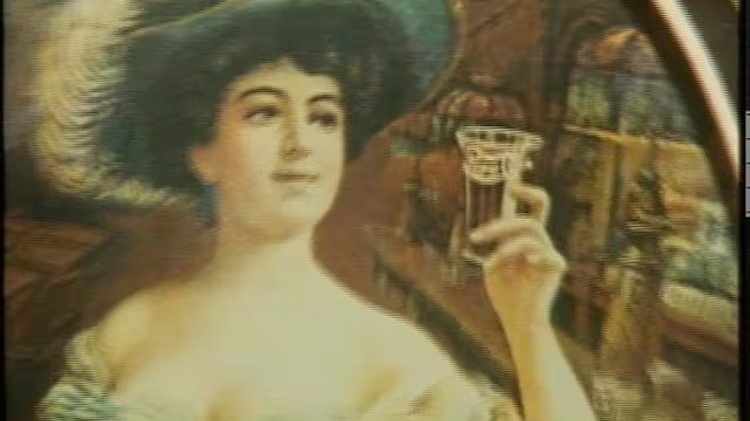

A look at the worldwide struggle for soft drink supremacy
This is a funny, almost satirical film. Inspired by Jill Chen Louis’s book The Cola Wars, John Pilger’s Burp! Pepsi v Coke in the Ice Cold War (1984) tells the story of the struggle between ‘those giants of carbonation and regurgitation, Coca-Cola and Pepsi-Cola’ – and how the two multinationals have influenced American politics.
Standing in front of a war monument in Washington, his voice heavy with irony, Pilger says, ‘This is a film about a world war. A war which in all my years as a correspondent has somehow escaped my attention. It is a war fought in more than 100 countries, regardless of ideology, in communist and capitalist countries, in Muslim, Buddhist and Christian countries. It’s a war that has directly involved President Eisenhower, President Johnson, President Nixon, President Carter, Chiang Kai-shek, Mao Zedong, the Dalai Lama, Mr Khrushchev and Father Christmas… One side claims to have captured China. The other side says that it has taken Russia.’
Pilger begins with the invention of Coca-Cola in the days after the American Civil War. ‘Coke’ claimed a ‘secret formula’ – false rumours that it might contain cocaine contributed to its mystique. This was followed by Pepsi’s ‘magical ingredients’. As the companies grew, their success was the result of an innovative franchise system that spread to 150 countries and to advertising campaigns that associated a product of basically sugar and water with ‘good times’. Coke could claim, with some truth, to have conceived one of the modern images of Santa Claus – jovial and plump, and drinking a Coke. By the 1980s, a landmark Congressional inquiry had identified soft drinks as the primary cause of obesity.
During the Second World War, Coca-Cola shipped whole bottling plants to the front line, with the US taxpayer – via the War Department – picking up the bill. Coke dispensers were installed in tanks, submarines, even fighter planes.
The Cold War presented an opportunity to capture markets long closed to American consumer goods. Coca-Cola was preferred in communist Poland, it claimed, to the ‘ideologically pure’ vodka, while Pepsi aligned itself with the infamous ‘Red baiting’ Senator Joe McCarthy, who called sugar rationing ‘anti-American’. Film star Joan Crawford, wife of Al Steele, Pepsi’s chairman in the 1950s, became a ‘Pepsi ambassador’.
President Jimmy Carter ensured Coca-Cola’s success in China, which the company ‘recognised’ before the United States had established diplomatic relations with the People’s Republic. Throughout much of his career, former Vice-President and President-to-be Richard Nixon was bankrolled by Pepsi-Cola, especially on his world travels, which took him behind the ‘Iron Curtain’. Thanks largely to its relationship with Nixon, Pepsi claimed what it regarded as the Cold War ‘prize’ – Russia.
Burp! may claim the distinction of the only film in which the heads of both Coke and Pepsi agree to appear and be interviewed, though separately. Donald R Keough, president of the Coca-Cola Company, leaves not a dry eye when he tells Pilger that he goes to bed every night believing his business adds ‘a little brightness to life’ and gives the example of an imaginary impoverished young woman in Colombia buying a drink of Coke. ‘For a moment,’ he says, ‘she’s got her hand around the same thing that the president of that country is drinking or that people of every walk of life drink. And I think that’s terribly valid.’
Pilger travels to Purchase, New York, to the lavish world headquarters of Pepsi-Cola, set in rolling gardens dotted with sculptures by Rodin, Moore and Giacometti. He asks the chairman, Donald M Kendall, if he ever reflects that the Pepsi empire was built on ‘nothing more than a bottle of sticky sweet water’. Kendall smiles and replies, ‘Ain’t that somethin’?’


